Visiting Ephesus in Turkey is one of the best things you can do in Turkey. Exploring Ephesus is high on the list for many travellers to this beautiful country, with the ancient ruins drawing more than 2 million visitors.
I went as a seven year old and have fond memories of clambering over the rocks and exploring the vast ruins. So when I returned during my two-week trip around Turkey, I made sure to visit again.
Ephesus is an ancient Greek city located on the west coast of Turkey that contains some of the best preserved ruins from Greek and Roman times As one of the most important cities in the ancient world, Ephesus has a wealth of historic sights for visitors to discover Here’s an overview of the top attractions and things to see on a trip to Ephesus, Turkey.
Explore the Ruins of Ancient Ephesus
The ruins of ancient Ephesus contain a remarkably well-preserved collection of ancient buildings, streets, theaters, temples, and more. It’s one of the highlights of any visit to the Aegean region of Turkey.
Some of the key sights in the ancient city ruins include
-
The Library of Celsus – A beautifully restored library dating back to 135 AD with an impressive facade.
-
Harbor Street – A marble-paved street that was the main thoroughfare through the ancient city.
-
The Grand Theater – A massive theater that could hold 25,000 spectators for plays, concerts, and more.
-
Terraced Houses – Lavish houses decorated with intricate mosaics that give a glimpse of wealthy life.
-
Temple of Hadrian – An impressive temple dedicated to the Roman emperor Hadrian.
-
Latrines – Public toilets that show the surprisingly advanced plumbing.
-
The Agora – The marketplace where people gathered to shop and socialize.
Exploring the sprawling ruins takes 2-3 hours to do justice to the site. It’s best to arrive early, around 8 am when it opens, to avoid large tour groups.
Marvel at the Library of Celsus
The Library of Celsus is one of the most famous and best preserved buildings in Ephesus. Built around 135 AD, the library has a stunning facade with four female statues representing wisdom, virtue, intelligence, and knowledge. The interior likely held around 12,000 scrolls and was built as a monument to the Roman senator Tiberius Julius Celsus Polemaeanus. It’s an absolute must-see when exploring Ephesus.
Walk Down Harbor Street
Harbor Street was the main thoroughfare running through ancient Ephesus, leading from the Grand Theater east to the old harbor. The street was lined with columns, shops, statues, and other monuments. Sections of the street’s marble paving and ruins of buildings remain remarkably intact. As you walk its length, you can imagine the chariots and crowds that once bustled down this busy street.
See the Terraced Houses
The Terraced Houses provide a glimpse into the lives of the wealthy in Ephesus over 2000 years ago. These houses were built on a hillside with multiple stories and lavishly decorated with intricate mosaics and frescoes. They display details like heating systems, colored marble walls, and fountains that show the advanced building techniques and lifestyles of the era. It’s a fascinating site to explore within the larger ruins.
Take in a Show at the Grand Theater
One of the best preserved structures in Ephesus is the massive Grand Theater, which could hold an estimated 25,000 spectators. The semicircular theater was used for plays, religious ceremonies, gladiator fights, and more. Though largely ruined today, you can climb up the seating tiers to admire the sheer size of the theater and imagine the crowds it once held. The acoustics are still excellent, so enjoy the sound when a guide demonstrates just how far sound travels.
Admire the Temple of Hadrian
This ornate temple with stunning carvings and arches was dedicated to the Roman Emperor Hadrian when he visited the city in the 2nd century AD. Located in the center of ancient Ephesus, the Temple of Hadrian honors the emperor with detailed reliefs and statues. The facade has been beautifully reconstructed to give an idea of how impressive the temple was in its prime.
Visit the House of the Virgin Mary
One of the most important Christian sites near Ephesus is the House of the Virgin Mary. It’s located near the ancient city on Nightingale Mountain. The small stone house is believed to be where Mary, mother of Jesus, lived out her final years. The peaceful site draws Christian pilgrims who drink from a sacred spring and visit the chapel on site. There are also stunning views of Ephesus and the surrounding valleys from the walking trail.
Explore Ancient Agora
In ancient Greek cities, the agora was the center of public life, a marketplace and meeting place combined. The Agora of Ephesus was a landscape of public buildings, shops, temples, statues, and more. Today you can still see remnants like the northeast gate,Columned Square, and parts of important buildings. It offers insight into daily public life in the influential city.
More Sights to Discover
Beyond the major highlights, Ephesus has many more fascinating ancient sights and monuments to discover:
- The Pollio Fountain with intricate carvings
- Remains of the Temple of Domitanus
- The pillars and arch of the Heracles Gate
- Byzantine Aqueducts that run through the site
- The pillars of the Temple of Artemis, one of the 7 Wonders
- The Cave of the Seven Sleepers with mythological history
- Vedius Gymnasium where sports and baths were held
- St. John’s Basilica, an important pilgrimage site
- Selçuk Castle on Ayasuluk Hill with panoramic views
With so many diverse attractions, Ephesus offers an outstanding window into life in ancient times and the early spread of Christianity. Wandering the ruins transports you back in time to one of the ancient world’s most important cities.
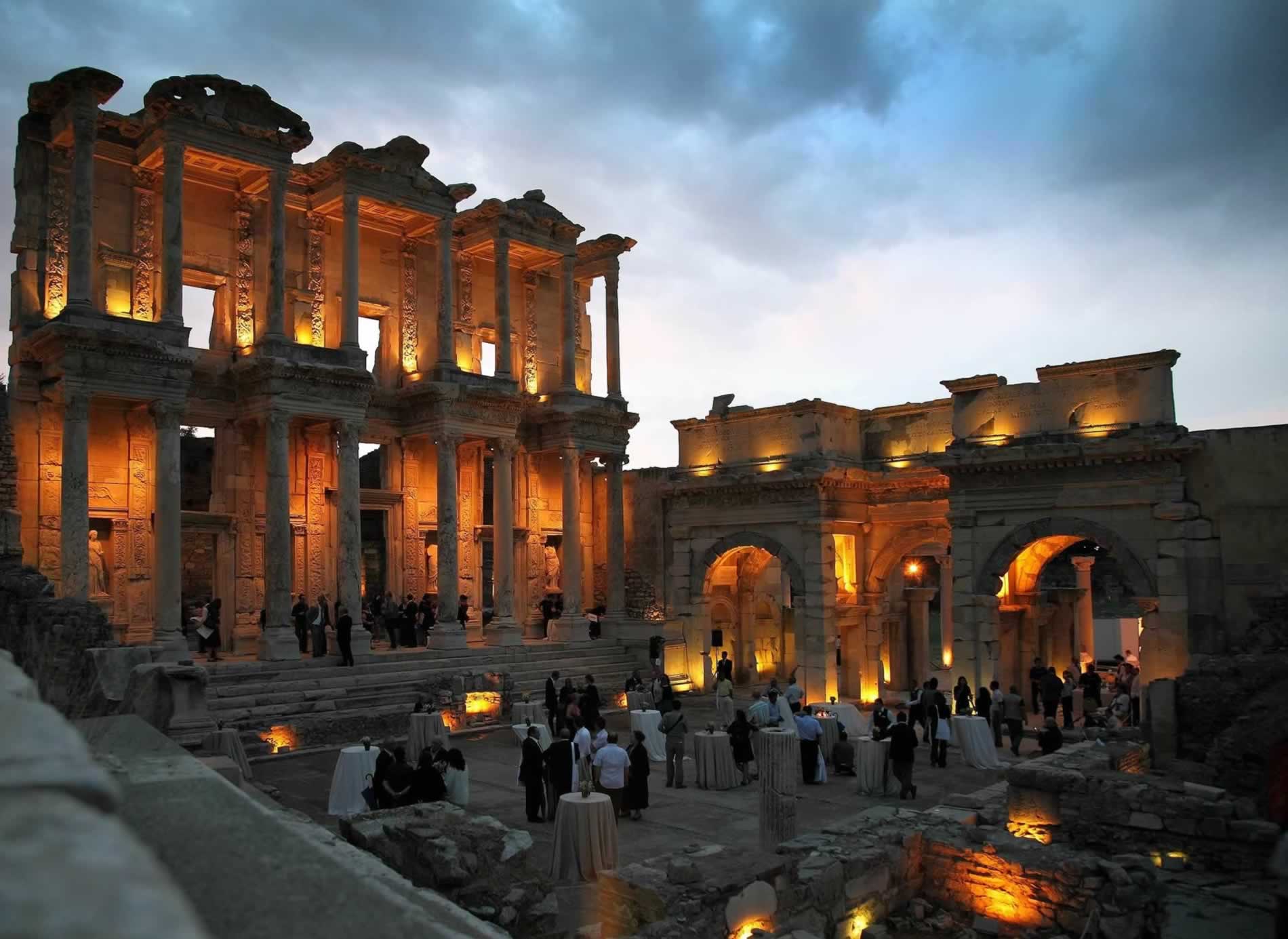
The history of Ephesus
The great city of Ephesus was built in the 10th century BC during the Classical Greek Era. It is estimated that at one point, as many as 225,000 people lived there.
Ephesus is considered Europe’s most complete ancient city, making it some of the best ancient ruin to see. Apparently, only 20% of the land has been fully excavated, which has already taken more than 150 years of evacuation. Yet there’s plenty to explore. Some of its most popular locations include the marble Temple of Artemis, the Basilica and the Library of Celsus, all of which are thought to be some of finest archeological sites in the world.
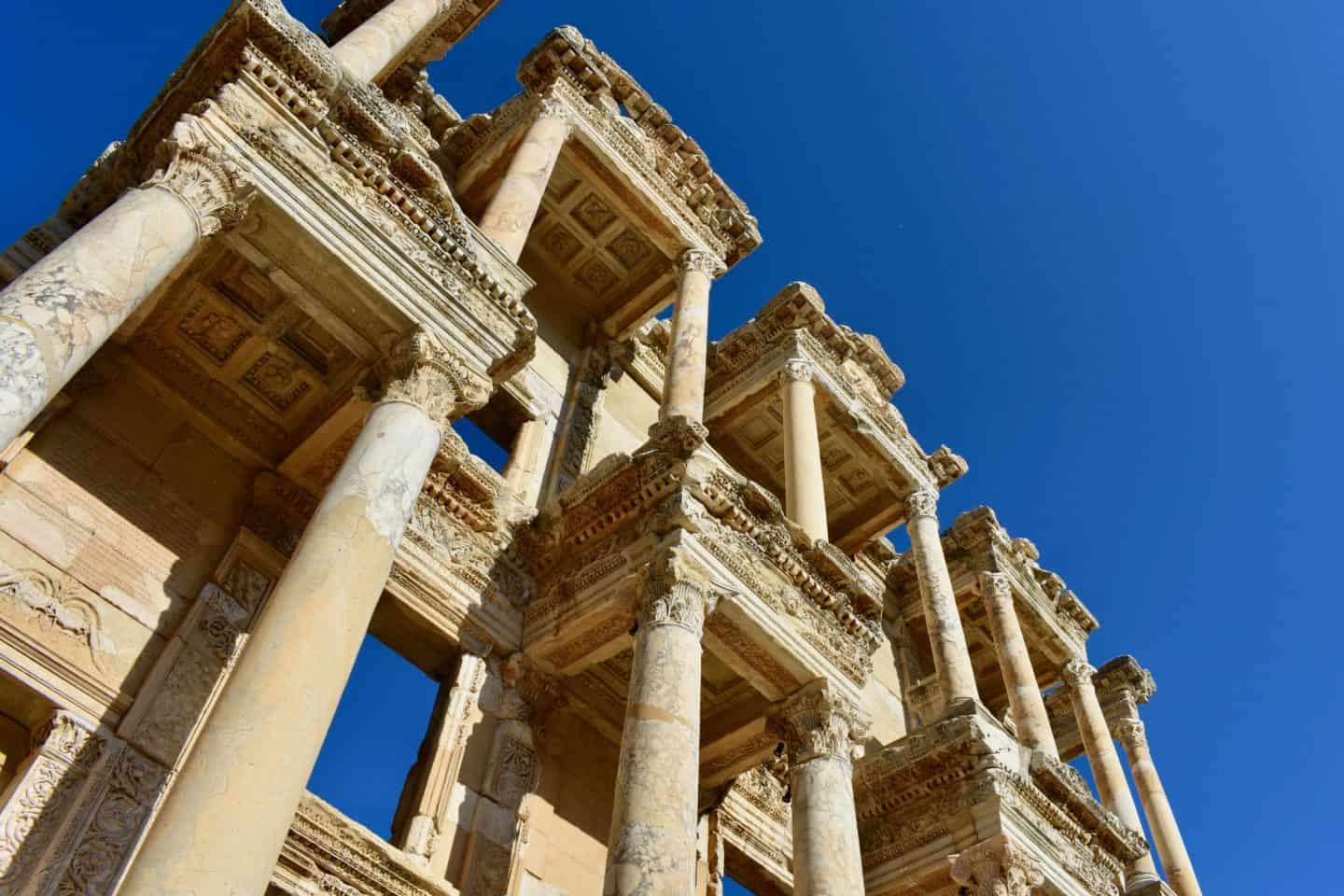
When is the best time to visit Ephesus?
Season-wise, the high season is through the summer but the temperatures can be very high during these months. The shoulder season months (April, May, September and October) are a brilliant time to visit Ephesus.
In terms of what time of day to visit Ephesus, the earlier the better. Cruise ships dock in nearly Kusadasi port every day, bringing thousands of day visitors to the archaeological sites. They walk around in huge tour groups and make it very difficult to explore.
If you do visit in the height of the summer season, I would advise arriving when it opens if you are visiting independently. The gates to Ephesus open at 8am. Not only will you beat the harsh midday sun, but you’ll enjoy the ruins almost entirely to yourself.
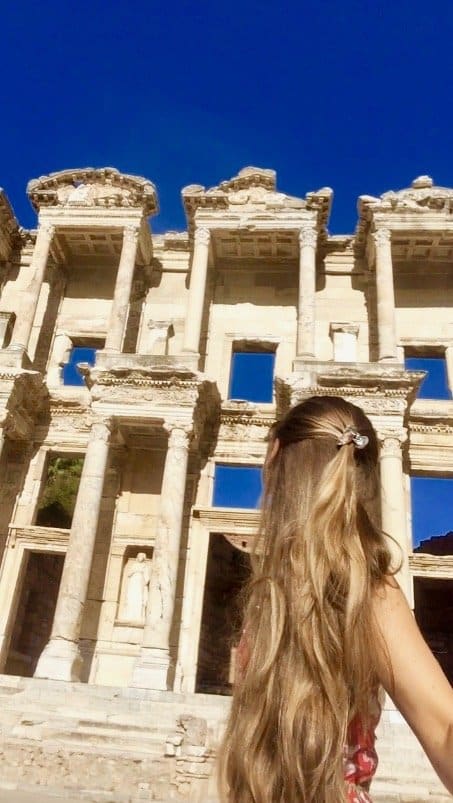
I went in August and enjoyed a few hours with few other tourists at all, it was pretty magical!
The alternative is to visit late in the day as the crowds begin to thin out and tourists head back to the cruise ship port.
In the summer months (April to October), Ephesus is open from 8am – 7pm and in the winter, from 8am to 5pm.
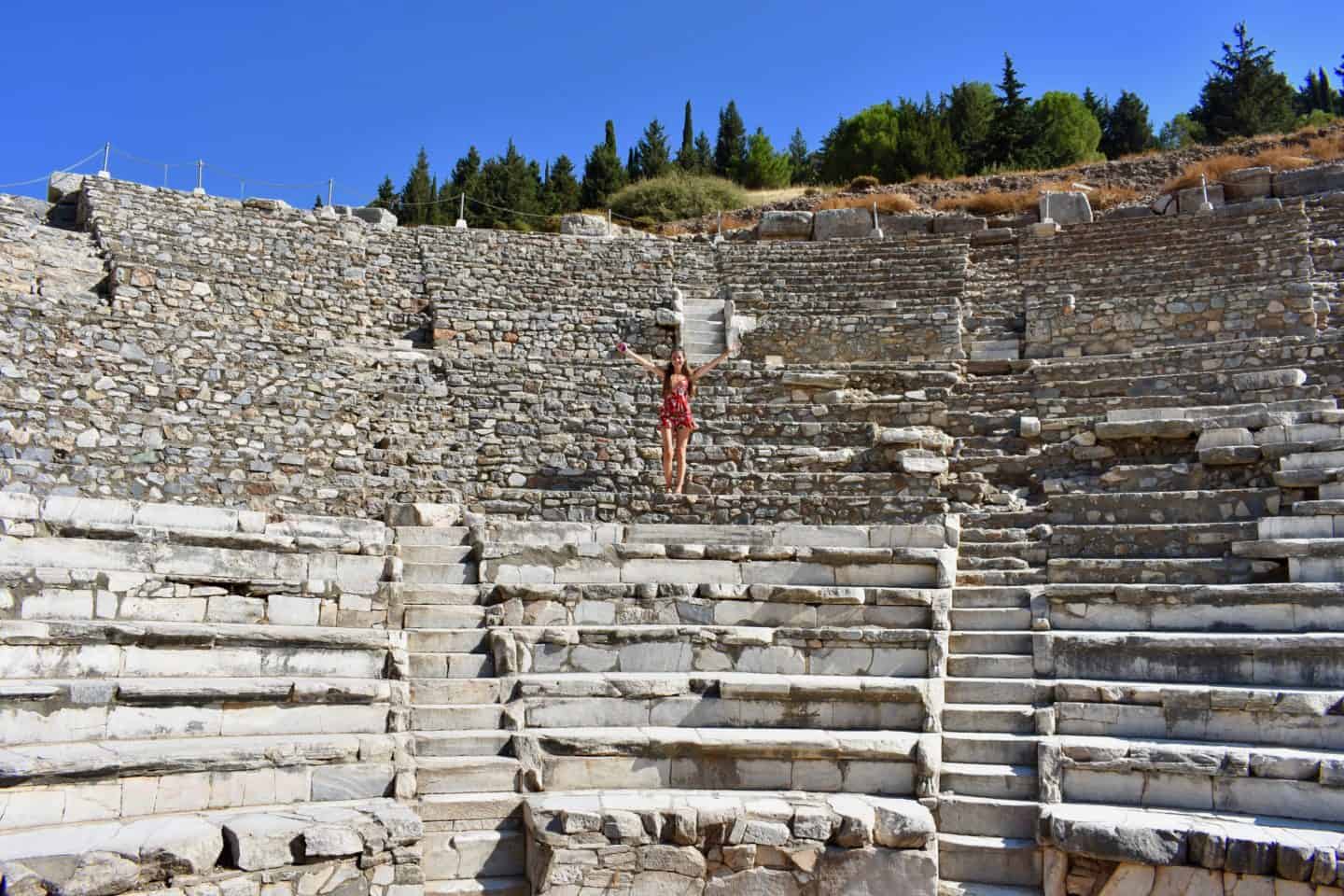
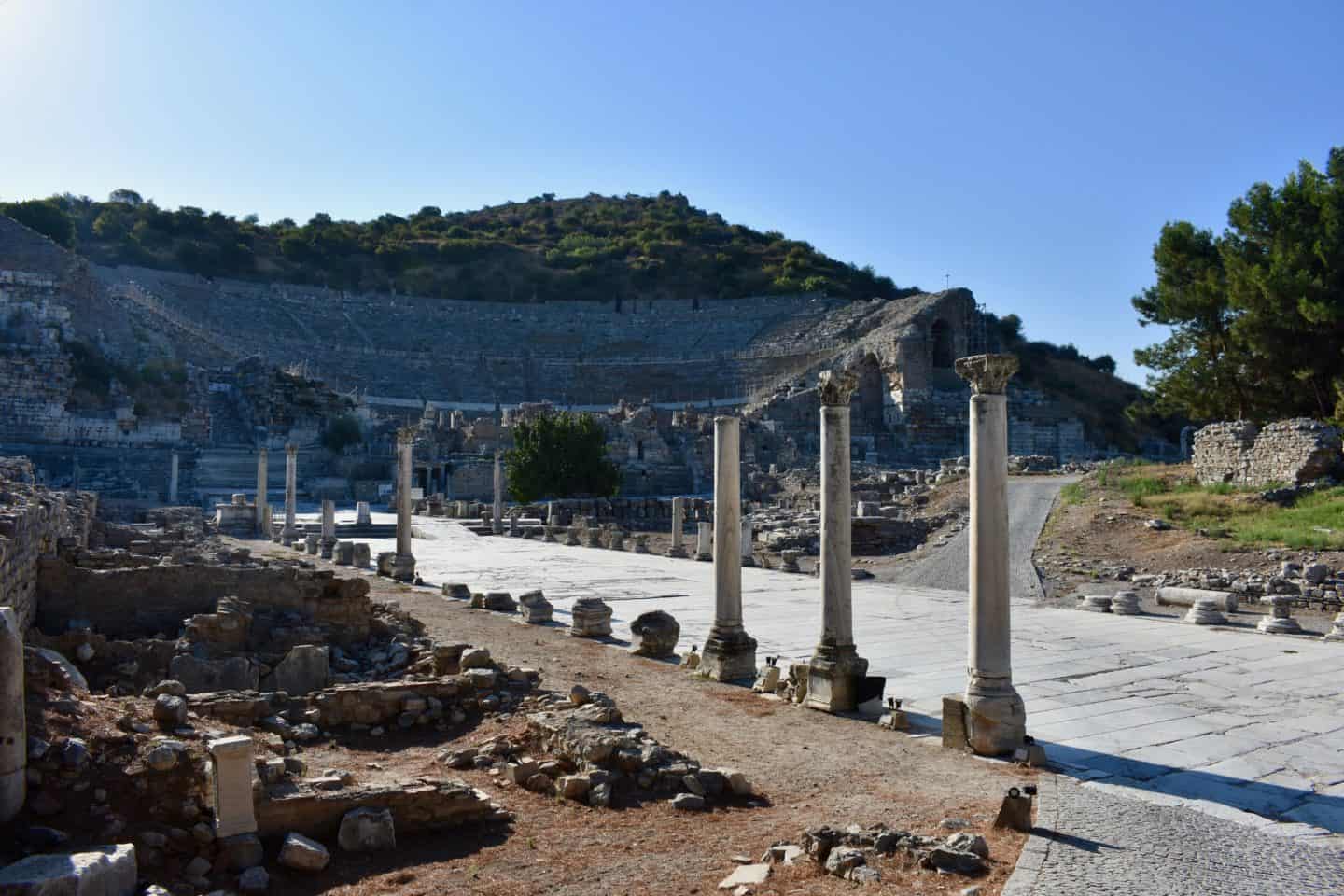

Ephesus, Turkey: Ancient City – Rick Steves’ Europe Travel Guide – Travel Bite
FAQ
Is Ephesus Turkey worth visiting?
Can you visit Ephesus without a tour?
How much time do you need to see Ephesus?
What is Ephesus Turkey known for?
